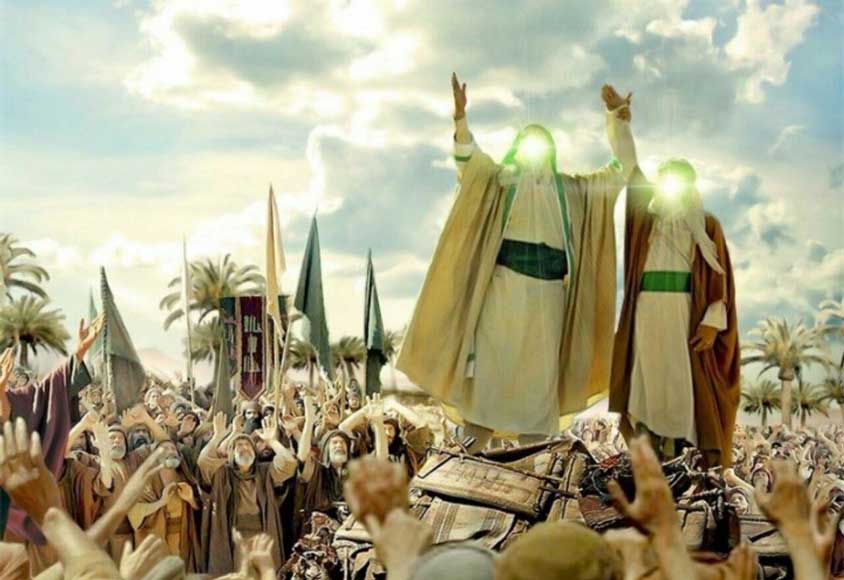November 24, 2017
By Reza Parchizadeh
In August 2016, the official website of the late Ayatollah Hossein Ali Montazeri, a Shia theologian and democracy advocate — currently run by his family and followers — published an audio recording of him lambasting senior members of the judiciary involved in the mass executions of political prisoners, leftist activists and members of the People’s Mojahedin of Iran [MKO] in the summer of 1988. Both Iranian and foreign press and broadcast media extensively reported on the tape and the wide range of reactions to its content.
The recorded conversation mostly revolves around political and security concerns of the time. What is missing from the audio file are Ayatollah Montazeri’s views on the Islamic State. The purpose of this article is to provide a different perspective on Montazeri and his philosophy.
Montazeri was a prominent Shia theologian and an influential religious thinker within the Islamic Republic. He was, at one point, thought to be the natural successor to the Supreme Leader. But he gradually distanced himself from the regime once he realized how the Islamic Republic had distorted and perverted Shia doctrine. Montazeri, who was a spiritual man with deep moral convictions, espoused the same ideas that we, who support secularism, advocate.
In order to better understand the history of Shia doctrine, we must travel 1,400 years back in time. Shiism was fundamentally a protest movement against the ruling regime. Shia doctrine states that the rightful successor to Prophet Mohammad was his cousin and son-in-law Ali Ibn Abi Talib. According to Shia belief, the Umayyad and Abbasid caliphates robbed the descendants of the Prophet Mohammad and Ali of their rightful claim to succeed the prophet.
The Islamic Council, which included many of Mohammad’s trusted companions, didn’t elect a descendant of the Prophet to succeed him after his death in 632 AD. Many of Mohammad’s close associates gathered at Seqifa Bani-Sa’eda, an indoor patio in Medina, and appointed Abu Bakr, one of Mohammad’s senior advisers and father-in-law, as his successor. Shia Islam, however, does not recognize the assembly and its outcome. The sect was originally shaped by the Iranian worldview rooted in a system of monarchy that considered the line of succession as a hereditary right.
The tradition has persisted for centuries. Mourners during the holy month of Moharram call the martyred third Shia Imam “Shah Hossein.” Pilgrims visiting the shrine of the eight Shia Imam in Mashhad at times address him as the “Shah of Khorasan.” As far as Shia Islam is concerned, the children of Ali and Fatemeh [the daughter of the Prophet Mohammad] were the rightful heirs to Prophet Mohammad’s rule.
The dispute between Shias and Sunnis stem from the events at Ghadir Khumm, where Prophet Mohammad’s caravan stopped during his last pilgrimage in 632 AD. Shia believe that in his address to his followers, Mohammad appointed Ali as his successor. Sunnis, however, interpret Mohammad’s comments at the communal prayer as the heartfelt and profound expression of a close spiritual relationship between him and Ali.
Shia doctrine, however, states that the rightful successors to the Prophet Mohammad are the male descendants of his daughter Fatimah. Each of these Imams was the son of the previous one, with the exception of Hossein ibn Ali, who was the brother of Hassan ibn Ali. The twelfth and final Imam is Mohammad al-Mahdi, who is believed by the Twelvers to be currently alive, and hidden in the Major Occultation until he returns to bring justice to the world. Shia doctrine, therefore, doesn’t recognize any earthly rule. The believers must bide their time until the advent of the Promised Mahdi. Throughout history, Shiism has always been a “passive protest” movement which has opposed earthly sovereignty.
Ayatollah Ruhollah Khomeini [the founder of the Islamic Republic] modernized and transformed Shia doctrine into a “Revolutionary” movement. Leftist philosophy and resistance to imperialism have had a profound impact on revolutionizing Shia doctrine in Iran. Leftist philosophy played a major role in the formation of the Islamic Republic. Many leftist groups around the world find themselves in the same camp as the Islamic Republic in their opposition to actions by the West, the U.S., Israel and the Arab world.
Realizing a 1,400-year dream of establishing an Islamic state, the Islamic Republic also shot itself in the foot – albeit inadvertently – by diminishing the role of the twelfth Imam. Shia doctrine revolves around the belief that the Promised Mahdi will establish a Islamic state as the true descendant of the Prophet Mohammad. However, the Islamic Republic claims to have done that already. In a way, the Islamic Republic has caused the demise of Shia philosophy.
Shia doctrine went into a downward spiral the moment it was transformed into an Islamic state. The Islamic Republic aimed to create a classless Utopian society in which human dignity, liberty and civil rights were guaranteed. Instead, it established a despotic and oppressive regime that has been responsible for killing many Iranian citizens.
Ayatollah Montazeri quickly realized this fact and became a critic of the regime. He was a conservative cleric who believed in Shia doctrine. His main concern was that the mass executions of the 1980’s discredited Shia Islam. He distanced himself from the regime once he realized that he couldn’t make any significant changes to the system.









